QuestionQUESTION: We are students at The Blake School, and we are conducting an experiment with a 50 gallon freshwater aquarium that contained (originally) 20 plants of 18 different species, 6 serpia tetras, 7 golden pristella tetras, 8 Buenos Aires tetras, and 7 red eyed tetras. Most of the plants have died, or been infected with algae. However, only 3 fish have died. We test the pH levels regularly, along with nitrate, nitrite, and ammonia. Normally, the pH is between 8.0 and 8.2. To lower the pH levels, we have been adding 5 ml of vinegar every wednesday. However, today we found that the pH level was exceptionally high, at 8.3. We were wondering if you could please give us some suggestions in lowering the pH, and what could be the source of the problem.
Additionally, we have been trying to breed 3 Buenos Aires tetras (one male, 2 females) in a separate, 15 gallon aquarium with 1 Hornwort plant. We haven't been successful, for about 2-3 months now, and we have followed every suggestion on online sources, including covering the tank with a cloth, having a plant in the tank, warming the water, and having more than 1 female. We would appreciate if you could give us some advice, please.
Thank you for your time!
~The Blake School Team~
ANSWER: Hello,
I would add a net of peat into the soil in the tank with the PH issues. Tetra need lower PH and yours is way too high, which is primarily why you've been losing them.
Adding vinegar will lower it, but only in a temprary basis. Other chemicals are at play. Everytime you refill, there are new chemicals coming in, as well. The best way to lower the PH on a permanent basis is to implement peat into the tetra tank. Now, this will add some tanin to the water, but Tetra are a blackwater fish and this will darken the water a bit, but it will lighten with time.
Add a quality peat made for fishes, please.
For the breeding issues, again, the PH is off. They are low PH fish. 6.5 to 7.0 ideally.
To breed them, try this:
Add the peat. The blackwater effect will mimic wild conditions helping them to condition.
Increase lighting and make sure temps aren't really above 72. Tetra do not like warm tanks. People put them in too hot a tank all the time.
Add a nice shot of fresh water weekly.
Make that water about 65 when you add it. It will possibly start the breeding process.
At night, add moonlight.
Let's try to mimic the wild atmosphere much as much as possible. Moonlights should go on about 2 am and out at 4, giving 2 hours of complete darkness.
Tank-raised fishes still respond to breeding tricks inherent to their breed, and instinctive traits to their species when triggers are implemented.
I have further suggestions.
For the tetra, instead of hornwort, let's try Java Moss. It's very fast-growing. Attatch some to a rock, under a piece of netting and tie it on with some thread. In a month, you have a complete bush.
The Tets will begin showing some interest in that once you get it growing. It requires low light, so lighting is not an issue with this particular plant. Tetra also do not like bright light. Regular, small lights will work. I have mine under very minimum lighting and they are find.
Do a lighting experiment and have some fun. Put a bright light on one side of the tank and a low light on the other. Leave the fish alone 20 minutes. It's almost funny. They only go to the lower lights.
Plants dying - Planted tanks require some moving water. HOB filters are good for growing plants, because no CO2 is necessary to keep them alive. One filter on each side of the tank, please. Keep the media changed and do water changes bi-weekly at a rate of 10%.
Lighting requirements are based on whatever types of plants you choose. Montessori students you are, however keep in mind that each plant has a specialized requirement for lighting. If your tank only has one type of lighting, I suggest making certain to choose plant-life that lives around that very type of lighting.
In addition, please add potting soil to the tank.
I suggest the following for your tetra tank (the tank with several tetra species in it) -
Start fresh. Add R/O water instead. Yes, it has been filtered through Peat and other media, however it is the best thing to use (I know, there's another plant growing expert out there blasting me for these words, but I have data to back this up), and the reason is that it is the specific PH you require and it will STAY at that PH when you refill it as it evaporates, if you do not use tap water and only use the R/O water.
So, start with R/O water. It has some nutrients removed (true) and some metals (true), but the trace elements and trace minerals are STILL there. Even R/O is not sterile water, as you know.
Fishes will excrete enough plant food that you will never need to add vitamins to the tank.
Fish emulsion is the best fertilizer known to man.
Soil- One layer of PEAT
One layer of potting soil, soaked wet to a mud-patty consistency.
Add 3 gallons of water and let it sit for awhile, to settle. Add a layer of gravel over the top to keep the soil down.
Fill the tank with the R/O water and add the plants and a HOB filter. Add fishes after the cycle...which won't be very long if you add the same live media used in the old tank.
Don't add vinegar. Don't add anything. Do you want to win your science experiment? Don't over-love the tank. Let nature provide a natural environment and watch as it works miracles.
Provide lighting. Good lighting and choose plants which are resident to that type of lighting, and to the depth of tank you have.
Don't allow your HOB filter to make waves as it pours back into the tank. Instead, fill to the level so it returns in a flow which makes no bubbles. This will alleviate most need for CO2, but if you do choose to use CO2, more power to you.
The PH will be steady around 7.0 with this system.
Breeding is difficult the first time, because everyone wants eggs TODAY. The thing is, the fish will not give eggs until they are ready. This means until lighting mimics their wild conditions, until the weather is the degree it is during breeding seasons and until the water conditions are ideal, most species of fish do not breed. Also, keep in mind, fish you buy at the store are very young. They should usually be around 1 year old to lay eggs.
Happy fish-keeping,
Renee
---------- FOLLOW-UP ----------
QUESTION: Thank you for the wonderful answer, it was really helpful!
Now, we were wondering how we could simulate moonlight in the aquarium. We also don't know what R/O water or an HOB filter are.
Also, you were talking about the cycle and we were wondering how long it takes to complete. We also wanted to ask you what is the approximated temperature for the survival of plants in the tank. By the way, when is the mating season for tetra fish?
Thank You,
~The Blake School Team~
AnswerHello again Black School Team,
First, mating season for Tetra is when the rains start. Brighter lighting and riled up water.
For instance, to get the tetra into breeding mode, you can let some nitrates form, and then add R/O DI (Reverse Osmosis) water. This simulates the wild tributaries they come from, filling up with fresh water from a recent rain.
What is R/O water? It is Reverse Osmosis water, which goes through several canisters which heavy filter it. Peat is used and therefore it's absolutely ideal for tetra.
To obtain R/O water, you could go to a water fill station at any store that has water refill stations. For instance, at our Food Max store, there is a water fill station which has Reverse Osmosis water, it's UV sterilized and it's also filtered. This gives the water a nice, soft start with proper tetra settings. That five gallon bottle costs me about $1.50US.
To simulate moonlight in the aquarium, you can have a go at the moonlights available on Ebay, which are very affordable. Get a regular timer and hook them to that, once mounted. Mimic moonlight 2 to 4 hours after total darkness begins, to 2 hours before the first dawn.
Tetra really are not hard to breed, once you get it figured out.
Starting with nice, large, full-grown stock is always a good way to begin, because they will be more ready than youngsters.
The cycle can take 2 weeks to a month. Monitor water conditions. If the nitrites or ammonia form and get high, change 25% of the water immediately everytime. Eventually, it will stop rising and will level off. To speed things up, use your old gravel, old filter media and use your rocks and plants from the old tank. Add some live snails to help the tank cycle as well. Snail poop will begin the nutrification process. You can, additionally, add Biozyme (from Petco_ to the tank to start the bacterial growth rate and to cut about 2 weeks off of your cycle. It's a great product.
Last, but not least, temperatures for plants are again, relative to where they are from, and what kind of plants you require. To set up a proper environment, always take a look a the requirements for the plant, comparing them to the requirements of the fishes you are going to breed.
For instance, if your plant is a Java Moss plant, it can have temperatures which are comfortable for it, around 72 degrees F. It requires low light. It grows very well in R/O water. Tetra poop feeds it.
Comparison:
Tetra like low light. Tetra like 72F. Tetra often require R/O water in the US and they poop.
The comparison's outcome? The Java Moss is a good plant to begin with in a Tetra tank.
Similarly, you will want to scale the plant vs. the fish's environment.
People think that to set up an aquarium, you take some gravel, water, a fish, filter and heater and throw it all together with a light on top and you have a tank.
Happy fish-keeping. :)
Renee

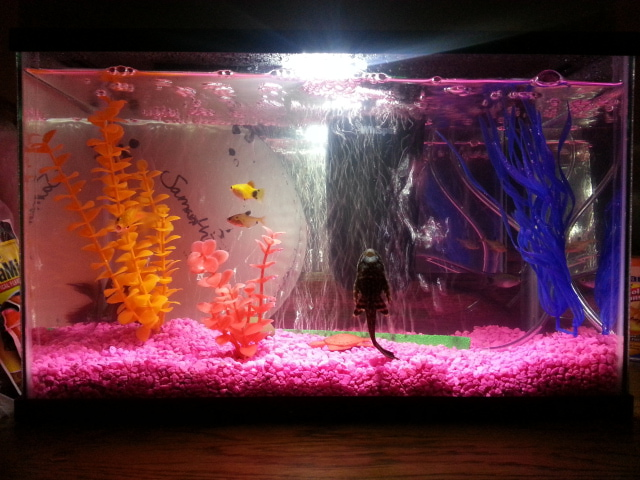 help! I have a new 5 gal tank & too many fish, I think
Question
aquarium
My daughter won 2 goldfish at
help! I have a new 5 gal tank & too many fish, I think
Question
aquarium
My daughter won 2 goldfish at
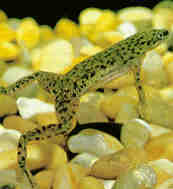 native freshwater fish
QuestionI am considering putting up a freshwater tank f
native freshwater fish
QuestionI am considering putting up a freshwater tank f
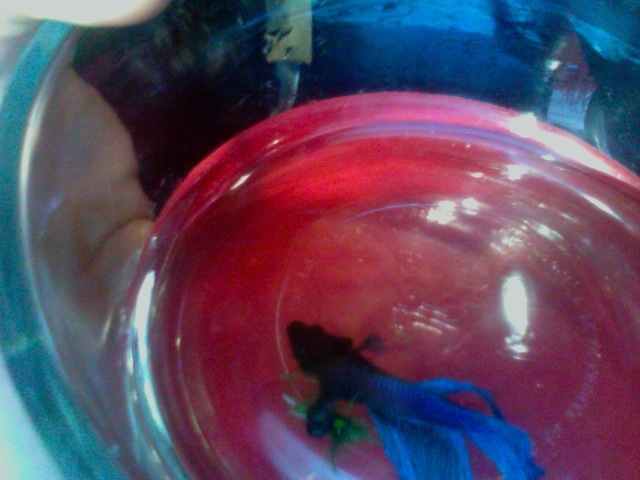 Betta fins tangles in hair algae
Question
betta with tangled ven
I came home today to fi
Betta fins tangles in hair algae
Question
betta with tangled ven
I came home today to fi
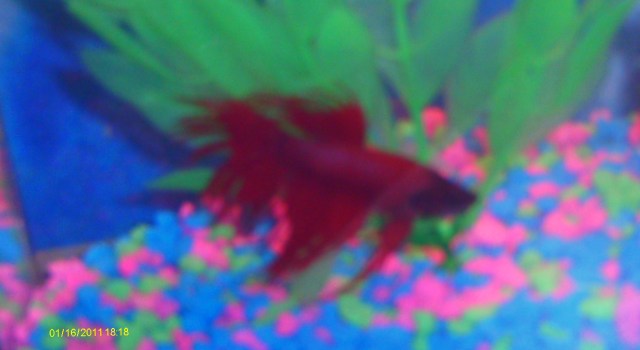 My Beta seems to be...fading. :( Please help...
Question
Once Happy Beta
Hi,
My Beta seems to be...fading. :( Please help...
Question
Once Happy Beta
Hi,
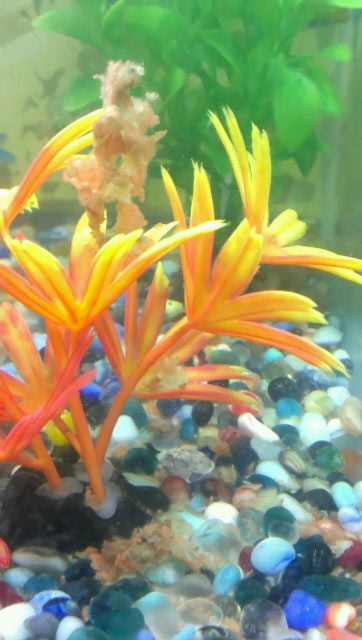 spotted molly fish pet
Question
stuff? ?? more stuff
Is it normal
spotted molly fish pet
Question
stuff? ?? more stuff
Is it normal